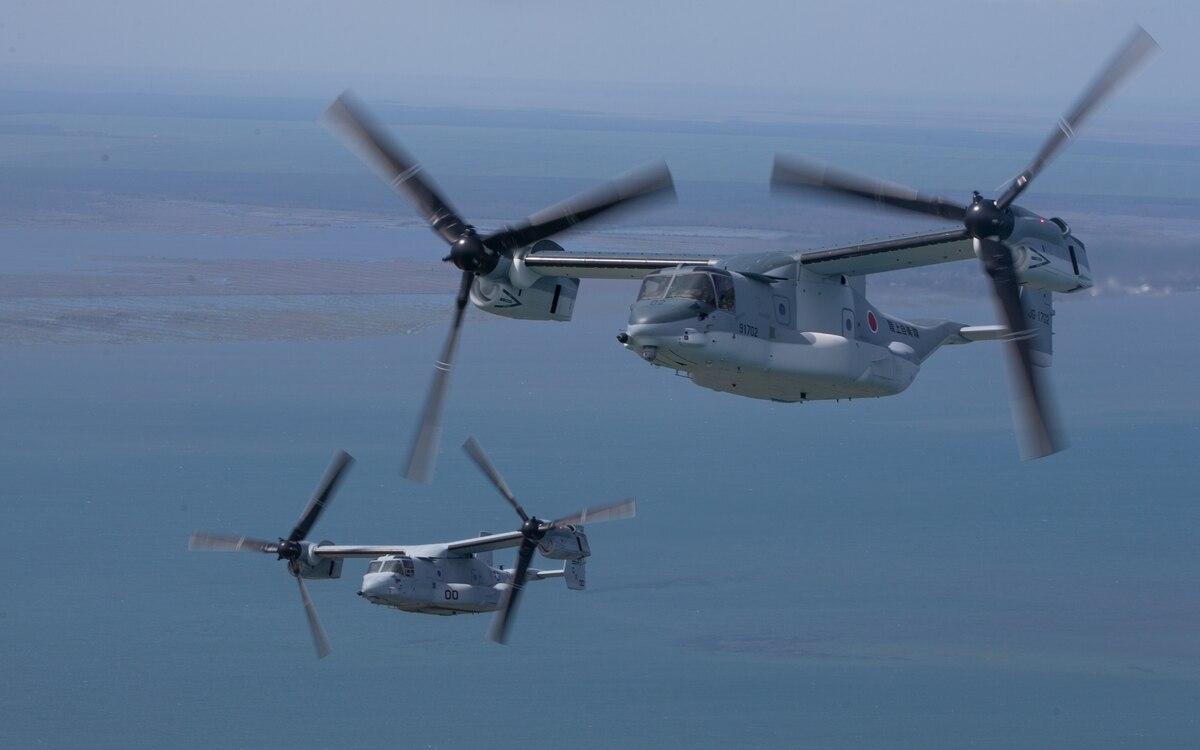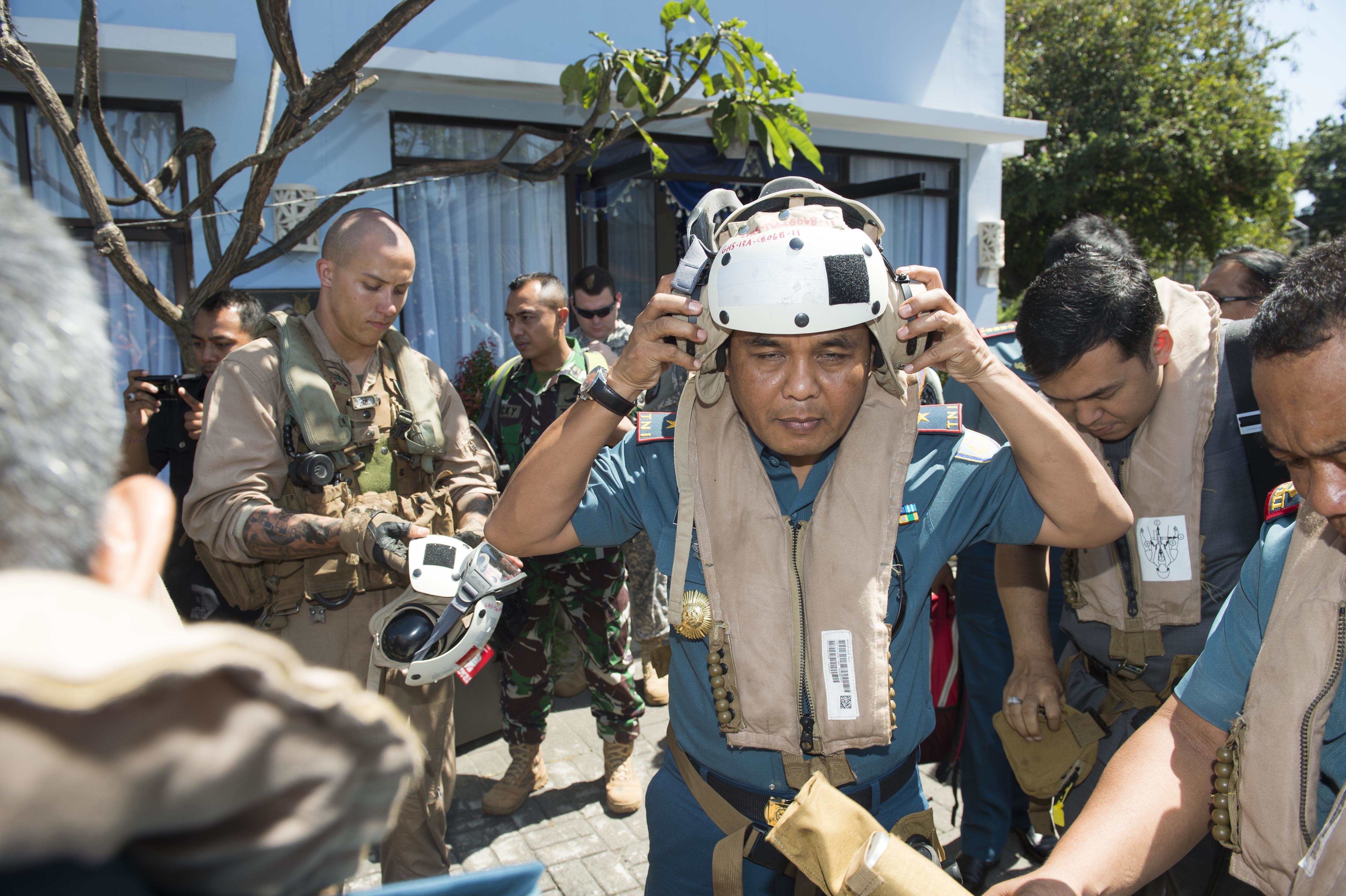The V-22 and Indonesia: Initial Considerations
Earlier this month, the US government provided an announcement of Indonesian interest in and pursuit of acquiring Ospreys.
In a July 6, 2020 press release by the Department of State:
The State Department has made a determination approving a possible Foreign Military Sale to the Government of Indonesia of eight (8) MV-22 Block C Osprey aircraft and related equipment for an estimated cost of $2 billion. The Defense Security Cooperation Agency delivered the required certification notifying Congress of this possible sale today.
The Government of Indonesia has requested to buy eight (8) MV-22 Block C Osprey aircraft.
Also included are twenty-four (24) AE 1107C Rolls Royce Engines; twenty (20) AN/AAQ-27 Forward Looking InfraRed Radars; twenty (20) AN/AAR-47 Missile Warning Systems; twenty (20) AN/APR-39 Radar Warning Receivers; twenty (20) AN/ALE-47 Countermeasure Dispenser Systems; twenty (20) AN/APX-117 Identification Friend or Foe Systems (IFF); twenty (20) AN/APN-194 Radar Altimeters; twenty (20) AN/ARN-147 VHF OmniDirectional Range (VOR) Instrument Landing System (ILS) Beacon Navigation Systems; forty (40) ARC-210 629F-23 Multi-Band Radios (Non-COMSEC); twenty (20) AN/ASN-163 Miniature Airborne Global Positioning System (GPS) Receivers (MAGR); twenty (20) AN/ARN-153 Tactical Airborne Navigation Systems; twenty (20) Traffic Collision Avoidance Systems (TCAS II); twenty (20) M-240-D 7.64mm Machine Guns; twenty (20) GAU-21 Machine Guns; Joint Mission Planning Systems (JMPS) with unique planning components; publications and technical documentation; aircraft spares and repair parts; repair and return; aircraft ferry services; tanker support; support and test equipment; personnel training and training equipment; software; U.S. Government and contractor engineering, logistics, and technical support services; and other elements of technical and program support.
The estimated total cost is $2.0 billion.
This proposed sale will support the foreign policy goals and national security objectives of the United States by improving the security of an important regional partner that is a force for political stability, and economic progress in the Asia-Pacific region. It is vital to U.S. national interest to assist Indonesia in developing and maintaining a strong and effective self-defense capability.
The proposed sale of aircraft and support will enhance Indonesia’s humanitarian and disaster relief capabilities and support amphibious operations. This sale will promote burden sharing and interoperability with U.S. Forces. Indonesia is not expected to have any difficulties absorbing these aircraft into its armed forces.
This announcement comes at a time when several dynamics of change affecting Indonesia are underway.
Clearly, the activities of China in the South China Sea are of significance. The announcement by Australia of a new round of defense changes, in which clearly, Indonesia considered a key partner in regional defense And with the Marines operating in the region, notably from training ops in Australia and the US Navy and Marine Corps reworking how to work more effectively together, operating an aircraft, that both now operate is of significance as well.
While this story was being released, I was travelling to visit the US Navy in both the Naval Aviation Warfighting Development Center (NAWDC) and to San Diego to visit the US Navy’s Air Boss as well as the new Osprey Navy command as well. After my return, I learned of this State Department announcement, and realized it would be a good opportunity to discuss what the acquisition of the aircraft would mean for the evolution of the Indonesian armed forces and for Indonesia more generally in the new strategic environment.
This announcement provides a good time to reflect on how such an acquisition would tie into developments in the region and evolving capabilities for Indonesia and its allies working to ensure that the rule of law at sea is maintained.
A number of considerations can be addressed.
How would the Osprey enhance the capabilities of the Indonesian authorities to deal with humanitarian crises in its unique geography?
Indonesia is a nation consisting of 17,000 individual islands spanning thousands of miles and it would seem clear that the speed and range of the aircraft would provide a unique capability to assist in humanitarian crises much more rapidly than would current capabilities be able to deliver.
How would the Osprey impact of the overall capabilities of the Indonesians to deal with counter-insurgency threats and challenges?
Here it would be useful to examine the experience of the Marines, and the USAF in dealing with how the Osprey has altered the concepts of operations of the joint force dealing with counter-insurgency.
How would the Indonesians be able to leverage the new approaches to training which the Marines have put in place to train the Japanese?
In other words, the Indonesians would not be the first partners to learn Osprey from Marines and there is a clear advantage to this slot in the learning curve.

How would the Indonesians be able to leverage the operational experience of the Osprey nation from operating from a variety of ships in crisis management and combat situations?
With the Australians, and their allies clearly engaged in the region, it will be propitious to be able to operate off of allied ships as well as one’ own.
In other words, rather than just looking at the Osprey buy as a platform acquisition, the focus should be upon how the acquisition is leaven for change for the Indonesians in dealing with core threats and challenges.
And with an assertive China in the region, this clearly is of concern for Indonesia and finding ways to better defend their interests interactively with allies and partners is a clear challenge.
How can the Osprey buy contribute to this challenge?
These are some preliminary questions which I will deal with in forthcoming articles.
But clearly, Osprey acquisition would take the Indonesian military into the high-speed force insertion world, one which will see new capabilities enter the US and allied forces in the next decade.
Getting experience on how your capabilities and concepts of operations can be adjusted to a high-speed combat asset is a down payment on learning how to fight in the rapidly evolving world of new combat capabilities
The featured image: Indonesia (July 30, 2015)
Members of the Indonesian navy don proper protective flight equipment before entering an MV-22 Osprey tiltrotor aircraft, assigned to Marine Medium Tiltrotor Squadron (VMM) 265 (Reinforced), for a tour of forward-deployed assault ship USS Bonhomme Richard (LHD 6). (U.S. Navy Photo by Mass Communication Specialist 3rd Class Taylor A. Elberg/Released)

